During the last decade, it has been realized that cold atom systems form a highly flexible platform for simulating many important models in theoretical physics. Traditionally, these models are results of abstractions or idealizations of various physical situations. The flexibility in cold atom experiments in changing the physical environment, the densities of particles and the interaction between them, as well as in introducing artificial gauge field and spin-orbit coupling, have made realizations of many models (such as boson and fermion Hubbard models, Dirac metals, Haldane models, Kagome lattices, etc) possible. In addition, there is a wide range of new models of fundamental interests (such as those with large spin bosons and fermions, with SU(N) symmetries, etc) that emerge in cold atoms systems due to their unique internal degrees. As of now, Quantum Simulation is pursued worldwide in major laboratories, and the progress in the last few years have been very exciting, with rapid progress in engineering topological band structures as well as systems with strong spin-orbit coupling. The goal of our workshop is to bring together the active researchers in the field to discuss the latest progress and future direction in Quantum Simulation.
Our goals have been achieved. Throughout the seven-week workshop, which includes an international conference on the second week, practically all aspects of Quantum Simulation have been discussed. The major topics include lattice gauge field theory, topological matters, quantum magnetism, superfluid mixtures, unitary Fermi gas, many-body localization, and simulation of mesoscopic transport.
For lattice gauge field theory, the goal is to come up with protocol to simulate the hamiltonians for gauge fields and matter fields using cold atoms in optical lattices. The idea of simulating dynamical gauge field is introduce a degree of freedom in the link of a lattice, which will be altered as a fermion hops from one site to another that passes through the link. During the workshop, there were many discussions on analogous systems in 2D and 1D, and the protocol needed to simulate gauge fields in these systems.
A lot of progress in quantum simulation of topological band structures has been reported in this workshop. The ETH group reported their recent work on the realization of Haldane model. Their experiment also showed that the "shaking lattice" method is an effective way to engineer complex tunneling matrix element which has much less heating than the usual Raman scheme. (See Fig.1).
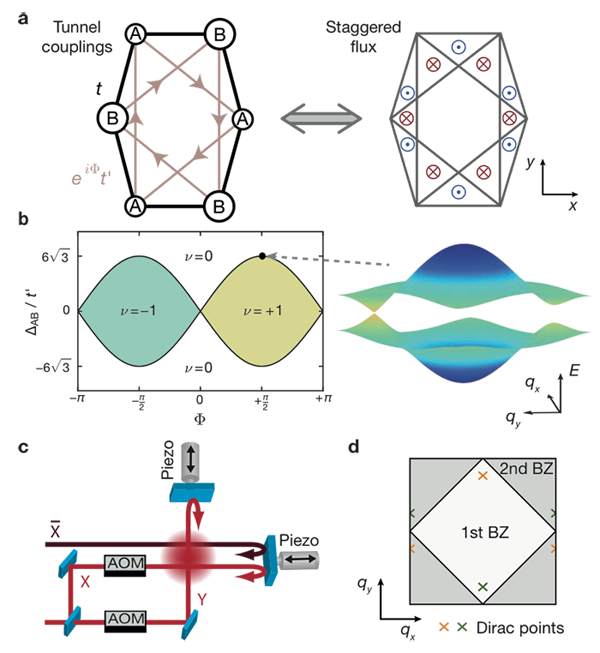
Fig.1 : The experimental set up of the E.T. H. group to realize the Haldane model.
See G. Jotzu, M. Messer, R. Desbuquois, M. Lebrat, T. Uelinger, D. Greif, T. Esslinger, Nature 515, 237-249 (2014)
The Munich group reported their creation of the Hofstadter model and their measurements of Berry curvature by performing an Aharonov-Bohm type of interference in momentum space. This method, which is accurate up to one part of 10^6! (See ...), shows that in principle, one can map out the distribution of Berry curvature over the entire Brillouin Zone for more complicated topological bands. (Fig.2).
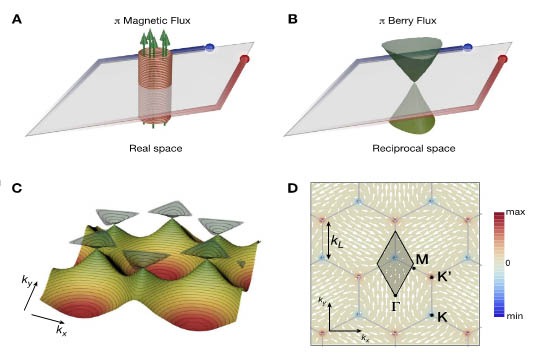
Fig.2 : The experiment of the Munich group on Aharonov-Bohm interferometer for determining Bloch band topology. See L. Duca, T. Li, M . Reitter, I. Bloch, M. Schleier-Smith, and U. Schneider, Science 347, 288 (2015).
The Florence group reported their creation of Hofstadter ladder using synthetic dimension and their detection of edge states in such ladders. This synthetic dimension is the internal degrees of the atom. This work shows the possibility to study many-body physics in four dimension in the future. (See Fig.3).
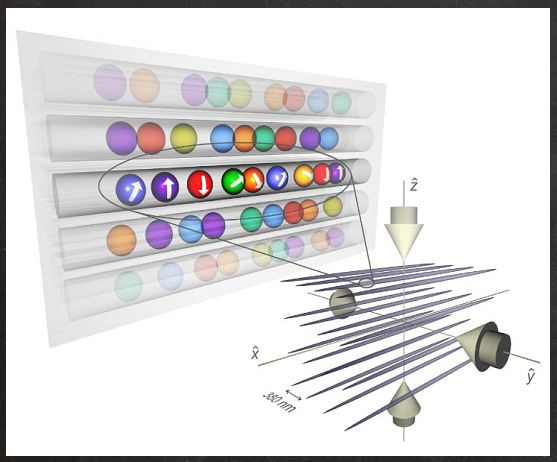
Fig.3: Creation of synthetic dimension using SU(N) spin. See the talk at the INT conference by L. Fallani here.
Apart from topological matters, many new developments in other areas have been reported. The ENS group reported their recent success in creating a mixture of Fermi and Bose superfluids, and their measurement on collective modes and critical velocity. This is the first realization of interpenetrating superfluids, and opens up opportunities of studying coupled superfluid for the first time. (See Fig.4)
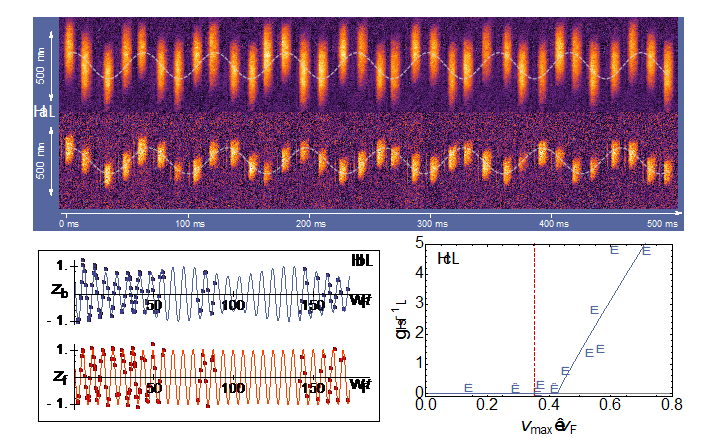
Fig 4: Collective modes of a mixture of Fermi and Bose superfluid. The figure show the motion of the center of mass of the two superfluids. See I. Ferrier-Barbut, M. Delehaye, S. Laurent, A. Grier, M. Pierce, B. Rem, F. Chevy, C. Salomon, arXiv. 1404.2548
One of the long term goal in quantum simulation is to achieve anti-ferromagnetic state in a fermion Hubbard model. The difficulty has been to cool the Mott state of this system down to the anti-ferromagnetic transition. The Rice group reported their new cooling method (which is to produce a anti-trap to allow energetic particles at the surface to leak out from the lattice), and show that they are very close to the anti-ferrromagnet phase.
Another exciting development reported by the ETH group was the creation of "junctions" connecting between reservoir of cold atoms. Such geometry allow the study of mescoscopic transport using cold atoms. The ETH group reported the observation of quantized conductance. These exciting developments now open the door for systematic studies of interaction effects on mesoscopic transport phenomena. (See Fig.5)
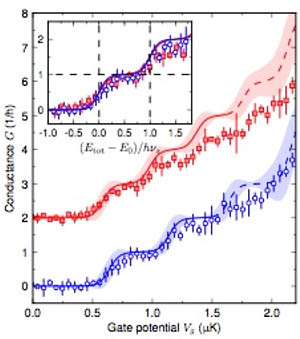
Fig.5 Observation of Quantized conductance by the ETH group. See S. Krinner, D. Stadler, D. Husmann, J-P. Brantut, and T. Esslinger, arXiv. 1404.6400
There was also a great deal of discussions in the workshop on 1D repulsive Fermi gases.
A number of theory groups had reported new ways to simplify the wavefunction for Fermi gas with strong repulsion, and that the system reduces to that of a quantum Heisenberg spin chain, which is important for studies of non-equilibrium dynamics.
Last but not least, there are new developments on the understanding of the expansion dynamics of a unitary Fermi gas, as well as report on the measurement of their shear viscosity. A unitary Fermi gas is a spin-1/2 Fermi gas where scattering between opposite spins reaches the unitarity limit. A key property of this system is that it has scale invariance. Theoretical studies of this system are very challenging because it is highly non-perturbative as a consequence of scale invariance. The Duke theory group has reported a new way to bridge the short time hydrodynamic expansion and long time ballistic expansion of this system. The experimental group at Duke also reported their latest measurement of the viscosity of this system, which is a quantum of great interest because of the prediction (based on string theory) of a universal bound on the ratio between shear viscosity and entropy.
The above is only a sample of the topics discussed in the workshop. Quantum simulation with cold atoms is in a fast expansion mode. There have been many exciting progress made in the last few years. It is expected a lot more exciting discovery will be made in the coming decades






